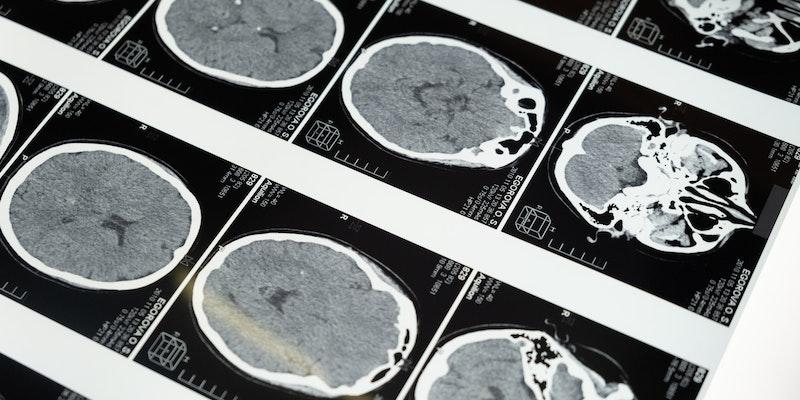Seizures, the result of abnormal electrical activity in the brain, indicate various neurological disorders. Characterized by sudden and uncontrolled neural firing, seizures can manifest with varying severity and symptoms. Understanding the three main types of seizures—Focal onset seizures, Generalized onset seizures, and Unknown onset seizures—is critical for accurate diagnosis, timely intervention, and tailored treatment approaches.
Brain's Electrical Activity
The core of human cognition, emotion, and functionality is a constant, well-regulated exchange of electrical impulses within the brain. Neurons, the primary cells responsible for this communication, emit signals that enable our interaction with the environment and internal response mechanisms. A delicate balance is crucial to maintain the harmonious operation of these processes, ensuring optimal brain function.
Disruption Leading to Seizures

Seizures arise when there is a disruption in this balance, causing a sudden surge of electrical activity. This phenomenon can be likened to an electrical storm within the brain, where neurons fire uncontrollably and excessively. The cause of such disruptions can be multifactorial, stemming from genetic predisposition, structural abnormalities, infections, or environmental triggers, leading to various seizure types.
Implications for Brain Function
The aftermath of this electrical imbalance significantly impacts the affected individual's normal function. Depending on the brain region involved, symptoms can range from alterations in consciousness and sensory perceptions to motor abnormalities and involuntary movements, indicating a seizure disorder.
Restoration of Balance
Post-seizure, the brain restores its electrical balance and regains normal function. This period, known as the postictal state, can be characterized by confusion, fatigue, and other transient symptoms as the brain recovers from overwhelming electrical activity.
Main Types of Seizures
There are three main types of seizures. Each of them is listed below with in-depth information.
Focal Onset Seizures
Focal onset seizures signify a seizure disorder that stems from a distinct region within the brain. The diversity in manifestations is inherent to the varying functions of the different affected brain areas to a spectrum of symptoms and behaviors. Consequently, the categorization of focal onset seizures extends into focal onset awareness seizures, focal onset impaired awareness seizures, and bilateral tonic-clonic seizures, each presenting unique challenges in diagnosis and management.
Symptoms and Characteristics
The symptoms associated with focal onset seizures are as variable as they are indicative of the brain regions affected. Some individuals might undergo alterations in sensory perceptions, experiencing phenomena such as visual disturbances or auditory hallucinations. For others, the implications are more physical, displaying motor symptoms ranging from involuntary jerking movements to a complete loss of muscle control.
Moreover, alterations in consciousness serve as another hallmark of this seizure type. The degrees to which awareness is affected diverge based on whether the seizure is classified as with or without impaired awareness, thus requiring meticulous clinical observation.
Diagnosis and Management
Identifying focal onset seizures necessitates a comprehensive and multi-faceted approach. Delving into the patient's medical history provides a foundational understanding, while EEG monitoring and advanced imaging techniques, such as MRI, contribute to a more precise diagnosis. The amalgamation of these methods helps distinguish this category's diverse types of seizures.
Management is equally nuanced, demanding a personalized strategy that may incorporate a regimen of anti-epileptic medications, lifestyle modifications, and, in more resistant or severe cases, consideration for surgical interventions. The overarching goal remains to mitigate the frequency and intensity of seizures, fostering an enhanced quality of life for the individual.
Generalized Onset Seizures
In contrast to their focal counterparts, generalized onset seizures are characterized by simultaneous involvement of both brain hemispheres. This category envelops a broad array of seizure types, including but not limited to absence seizures, atonic seizures, and myoclonic seizures, each with its distinctive presentation and clinical challenges.
Symptoms and Characteristics
The symptoms of generalized onset seizures are notably varied, manifesting as anything from brief lapses in consciousness to forceful, full-body convulsions. The commonality among these diverse manifestations is the loss of consciousness due to the extensive brain involvement inherent to these seizures.
Given the extensive range of symptoms and the resultant postictal confusion, the immediate aftermath of a generalized onset seizure can be particularly distressing for the individual affected and those around them.
Diagnosis and Management
The diagnostic process for generalized onset seizures mirrors the thoroughness required for focal seizures, integrating EEG studies, advanced imaging, and a comprehensive clinical evaluation. This approach aids in distinguishing between the various types of seizures and formulating an appropriate treatment plan.
Management of generalized onset seizures aims to curtail the severity and frequency of seizure episodes. This is achieved through pharmacological interventions, dietary therapy, and exploring neurostimulation options when conventional treatments prove inadequate.
Unknown Onset Seizures
Unknown onset seizures represent a particularly challenging type of seizure disorder owing to the initial ambiguity surrounding their origin. This uncertainty in categorization necessitates a flexible and adaptive approach to diagnosis and management, as these seizures may eventually be reclassified as either focal or generalized based on the accruement of additional information.
Symptoms and Characteristics
The presentation of unknown onset seizures is inherently diverse, reflecting the potential involvement of different brain areas. The absence of a discernible beginning renders these seizures unpredictable and can be a source of significant distress for affected individuals.
Diagnosis and Management
Given the dynamic nature of unknown onset seizures, the diagnostic methodology is adaptable, evolving with the emerging understanding of the seizure's origin. Consequently, management strategies are developed flexibly, allowing for modifications as more information becomes available and a clearer picture of the seizure type is formed.
Recognizing and Responding to Seizures

Recognition of seizures is pivotal for timely intervention. It necessitates observing sudden changes in behavior, movement, consciousness, and sensory perception. Since symptoms can vary widely across different seizure types, vigilance and awareness are essential in identifying a potential seizure disorder.
Appropriate Response Measures
Ensuring the individual's safety is the immediate priority when responding to seizures. This involves laying the person down, removing nearby hazards, loosening tight clothing, and positioning them on their side to maintain an open airway. Monitoring the seizure duration is crucial, and medical help should be sought if the seizure persists or if another seizure follows.
Postictal Support
After the seizure cessation, individuals often experience confusion and fatigue and may not recall the event. Offering reassurance, explaining what occurred, and allowing them to rest are essential in providing positive support.







